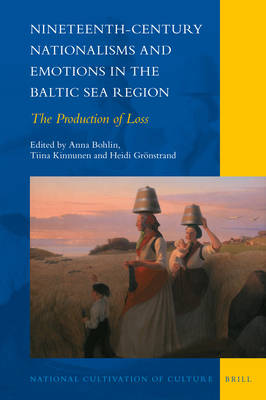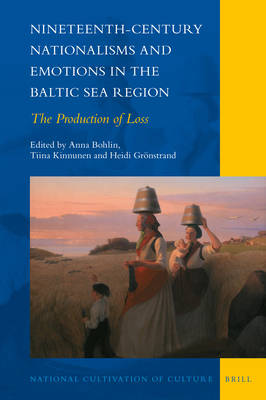
- Afhalen na 1 uur in een winkel met voorraad
- Gratis thuislevering in België vanaf € 30
- Ruim aanbod met 7 miljoen producten
- Afhalen na 1 uur in een winkel met voorraad
- Gratis thuislevering in België vanaf € 30
- Ruim aanbod met 7 miljoen producten
Zoeken
Nineteenth-Century Nationalisms and Emotions in the Baltic Sea Region
The Production of Loss
€ 222,45
+ 444 punten
Omschrijving
A sense of loss is a driving force in most nationalist movements: territorial loss, the loss of traditions, language, national virtues or of a Golden Age. But which emotions charged the construction of loss and how did they change over time? To what objects and bodies did emotions stick? How was the production of loss gendered? Which figures of loss predated nationalist ideology and enabled loss within nationalist discourse? 13 scholars from different backgrounds answer these questions by exploring nationalist discourses during the long nineteenth century in the Baltic Sea region through political writings, lectures, novels, letters, paintings, and diaries.
Contributors are: Eve Annuk, Jenny Bergenmar, Anna Bohlin, Jens Grandell, Heidi Grönstrand, Maciej Janowski, Jules Kielmann, Tiina Kinnunen, Kristina Malmio, Peter Nørgaard Larsen, Martin Olin, Jens Eike Schnall, and Bjarne Thorup Thomsen.
Contributors are: Eve Annuk, Jenny Bergenmar, Anna Bohlin, Jens Grandell, Heidi Grönstrand, Maciej Janowski, Jules Kielmann, Tiina Kinnunen, Kristina Malmio, Peter Nørgaard Larsen, Martin Olin, Jens Eike Schnall, and Bjarne Thorup Thomsen.
Specificaties
Betrokkenen
- Uitgeverij:
Inhoud
- Aantal bladzijden:
- 396
- Taal:
- Engels
- Reeks:
- Reeksnummer:
- nr. 25
Eigenschappen
- Productcode (EAN):
- 9789004430389
- Verschijningsdatum:
- 8/07/2021
- Uitvoering:
- Hardcover
- Formaat:
- Genaaid
- Afmetingen:
- 155 mm x 234 mm
- Gewicht:
- 725 g

Alleen bij Standaard Boekhandel
+ 444 punten op je klantenkaart van Standaard Boekhandel
Beoordelingen
We publiceren alleen reviews die voldoen aan de voorwaarden voor reviews. Bekijk onze voorwaarden voor reviews.







